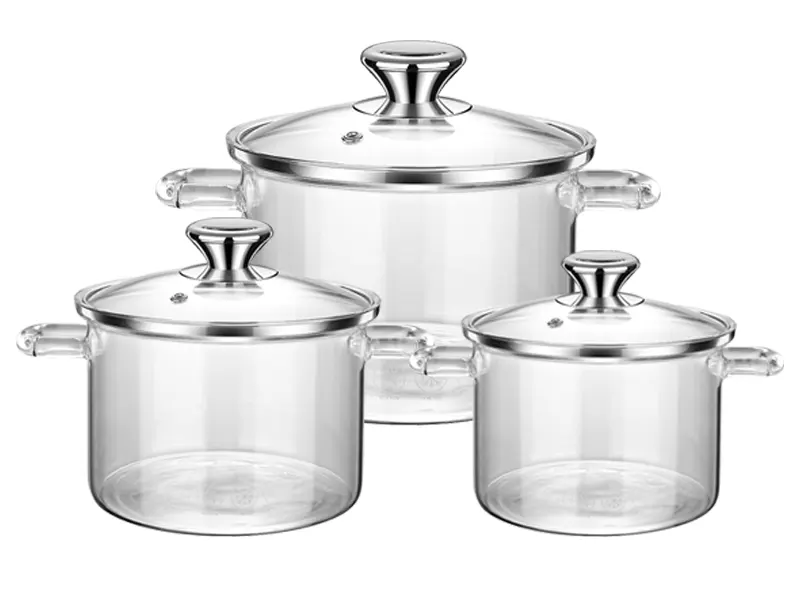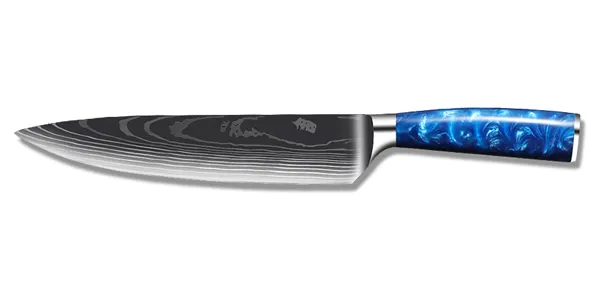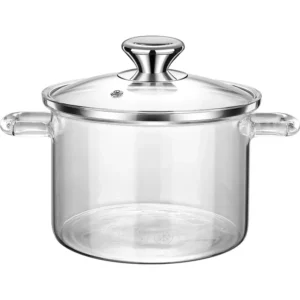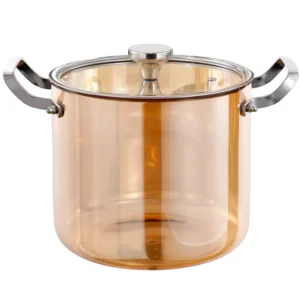Glass Cookware Manufacturer
Changwen glass cookware is made of high borosilicate glass, which can withstand low temperature of -20°C, high temperature of 400°C, and can withstand 150°C instantaneous temperature difference. It is suitable for a variety of heating methods, such as induction cooker/ceramic stove/microwave oven/oven/steamer/open flame heating.
Home > Glass Cookware
Changwen Glass Cookware
People who know how to use glass pots know that they are good, but those who don’t know how to use them can’t understand their benefits.
It is well known that cast iron pots have good heat collection, and glass pots can collect heat twice as much as cast iron pots. Glass quickly collects heat, it does not require too much gas, and only needs the lowest fire to stew. The lowest fire is the key, it does not require too much firepower, just a little bit, the water switch is a low fire, so small that when you think the fire is about to go out, it is the lowest fire. A little red flame on the blue flame is full of firepower for it.
After mastering the cooking skills of glass pots, you will find that it is very easy to use.
Why Choose Changwen Glass Cookware?

High borosilicate glass is used to resist cold and heat and explosion. It can withstand instantaneous temperature difference of -20°C-150°C and will not crack when alternating between hot and cold.
Available in transparent or light yellow, very beautiful
The combination of stainless steel and glass is more durable
Suitable for induction cookers/electric ceramic cookers
Comparison of Common Glass in Kitchenware
Tableware glass refers to glassware used to hold food and beverages, such as small plates, cold dish plates, wine utensils, etc. Commonly used glass is made of the following 4 materials.
Soda-lime glass
Soda-lime glass is also an ordinary glass used in daily life, which is divided into two formulas: oxidizing and reducing. By adding various colorants to the soda-lime silicate system glass, tableware glass products of different colors can be made.
The rapid temperature difference of soda-lime glass is greater than 50°C. For example, if you take out a glass cup in the refrigerator and immediately pour boiling water into it, it may break. In addition, soda-lime glass products are not recommended to be heated in a microwave oven, otherwise there will be certain safety risks.
Borosilicate glass
Borosilicate glass is a high-grade glass material that not only has the advantages of soda-lime glass, but also has the characteristics of high strength and large temperature difference between cold and hot deformation. Borosilicate glass tableware products have extremely high transparency and gloss, and are resistant to cold and hot temperature differences, chemical corrosion, and rapid temperature differences greater than 110°C. They are very suitable for microwave ovens, ovens, refrigerators and other electrical appliances.
Microcrystalline glass
Microcrystalline glass is also called ceramic glass, which has the dual properties of ceramics and glass. This type of material is also called super heat-resistant glass. The glass cookware that is very popular in the market is made of this material. Its characteristics are particularly good heat resistance, and the sudden temperature difference is 400℃.
Lead crystal glass
Commonly known as crystal glass, it is generally used to make high-heeled glasses. It has good refractive properties, good hand feel, and a crisp and pleasant sound when tapped.
Tempered glass
Ordinary glass is made by physical tempering. Compared with ordinary glass, its impact resistance is greatly enhanced, and there are no sharp fragments after breaking, and its heat resistance is also greatly enhanced. However, it is not recommended to heat tempered glass tableware in a microwave oven because it is easy to burst.
Comparison of various glasses
| Property | Tempered Glass | Borosilicate Glass | Soda-Lime Glass | Microcrystalline Glass | Lead Crystal Glass |
|---|---|---|---|---|---|
| Strength | High, resistant to impact | Moderate, less durable than tempered | Average, less impact-resistant | High, very durable | Moderate, not as strong as others due to lead content |
| Thermal Resistance | High, can handle sudden temperature changes | Very high, excellent thermal resistance | Low, sensitive to thermal shock | High, good thermal properties | Low, can be sensitive to thermal shock |
| Chemical Resistance | Good, resists most chemicals | Excellent, more resistant to chemicals | Moderate, can react to some chemicals | Excellent, highly resistant | Low, susceptible to some chemicals |
| Weight | Heavier due to thicker construction | Lightweight | Moderate | Heavy, often thicker | Heavy due to lead content |
| Price | Moderate, more affordable than borosilicate | Higher, due to better performance | Low, most affordable | High, specialized material | High, due to lead content |
| Usability | Great for everyday kitchenware | Ideal for labware and high-end bakeware | Common in general use | Specialized culinary tools and high-end cookware | Decorative tableware |
| Durability | High, shatters into small, less harmful pieces | High, but can break into sharp pieces | Moderate, breaks into sharp pieces | High, very tough | Moderate, can shatter into sharp pieces |
| Transparency | Excellent, very clear | Excellent, very clear | Good, but can be less clear over time | High, often has a frosted or opaque appearance | Brilliant, high refractive index |
| Common Uses | Bakeware, storage containers, drinkware | Laboratory glassware, high-end bakeware | Drinking glasses, everyday dishes | Specialty kitchenware, decorative items | Fine glassware, decorative pieces |
Glass Cookware FAQ
The downside to glass cookware is that it is susceptible to thermal shock, where the glass can crack or shatter easily when exposed to sudden changes in temperature. Fragility, glass cookware is more fragile than metal cookware and can break if dropped or hit against a hard surface.
Glass cookware is a safe, non-toxic choice that won’t leach chemicals and is easy to clean after soaking. Glass is transparent, allowing you to see the cooking process and monitor your food without having to lift the lid.
Glass cookware offers several advantages including being non-toxic, transparent, non-reactive, and aesthetically pleasing. It is also easy to clean and maintain, durable, and safe for microwave use.
Glass cookware can withstand temperatures up to 392 degrees F (200°C) during normal use. It is also important to avoid rapid changes in temperature with glass cookware, such as going directly from the refrigerator to a hot oven, as this can cause the glass to shatter.
If a glass pot is going to explode, the premise is that the “instant temperature” has exceeded the range that the glass itself can withstand. In this case, the glass will explode instantly.
The instant temperature that high borosilicate can withstand is about 150°C, and the instant temperature that ceramic glass can withstand is about 400°C or more.
Glass pots made of these two glass materials will not explode.
Get a cookware catalog?
WE’RE HERE TO HELP. 24 HOURS A DAY, 7 DAYS A WEEK.





